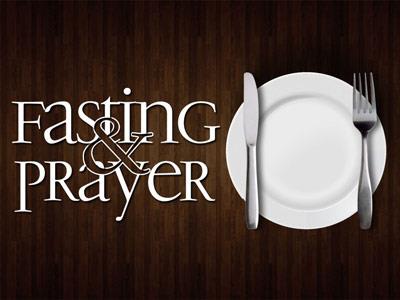-
Divine Dialoge -- Postures Of Prayer Series
Contributed by David Welch on Apr 9, 2018 (message contributor)
Summary: Sixth in a series on prayer dealing with the various postures of prayer
“Divine Dialogue” Pt 6
Postures and Passion of Prayer
We have covered significant territory regarding the subject of prayer in five weeks of messages.
I have tried to answer some common questions regarding prayer from both descriptive passages (examples of others) of the Bible as well as prescriptive commands related to prayer).
I. PERSPECTIVE ON PRAYER -- What is prayer?
II. PURPOSE OF PRAYER – Why Pray?
III. PREREQUISITES FOR PRAYER – Who can pray?
IV. PROMISES REGARDING PRAYER – What does God promise to do?
V. PURPOSES FOR UNANSERED PRAYER – Why doesn’t God answer?
VI. POSTURES IN PRAYER – What should I do with my body?
Regarding the subject of communication, research suggests that only 5 percent effect is produced by the spoken word, 45 percent by the tone, inflexion, and other elements of voice, and 50 percent by body language, movements, eye contact, etc. While the Bible rarely commands a specific physical posture or activity related to prayer, we have numerous examples of physical expressions accompanying communication with God. Through various physical postures we communicate attitudes and heart as we talk to God. These are physical postures directly associated with prayer. There are addition physical expressions associated with worship not discussed here.
Positions in prayer shouldn’t be sterile, routine or a “have to”, but should flow naturally as part of our worship to God. How we position our body can enhance our prayers and give them greater expression and definition. They can be a reflection of what is going on in our hearts.
When I grew up it was always, “bow your heads, fold your hands and close your eyes.”
The practical result of those is to show reverence, prevent fidgeting and distraction.
A. Raise Hands
I want the men in every place to pray, lifting up holy hands, without wrath and dissension. 1 Tim 2:8
Hear the voice of my supplications when I cry to You for help, when I lift up my hands toward Your holy sanctuary. Psalm 28:2
I remember the days of old; I meditate on all Your doings; I muse on the work of Your hands. I stretch out my hands to You; My soul longs for You, as a parched land. Selah. Psalm 143:5-6
My eye has wasted away because of affliction; I have called upon You every day, O LORD; I have spread out my hands to You. Psalm 88:9
So when you spread out your hands in prayer, I will hide My eyes from you; Yes, even though you multiply prayers, I will not listen. Your hands are covered with blood. Isaiah 1:15
Moses said to him, "As soon as I go out of the city, I will spread out my hands to the LORD; the thunder will cease and there will be hail no longer, that you may know that the earth is the LORD'S. Exodus 9:29
Just what does this gesture communicate? Probably different things to different people. For some, it indicates an openness to God’s will. Others it communicates a concentrated direction of our prayer to God in heaven.
B. Stand
Then Solomon stood before the altar of the LORD in the presence of all the assembly of Israel and spread out his hands toward heaven. 1 Kings 8:22
Standing indicates a respect for authority. We are called to stand when the judge enters the courtroom. People stood when the king entered the room. We can stand in His presence to show respect. The Jews had a practice of standing at the reading of the Word demonstrating respect for God’s word.
C. Sit
When I heard these words, I sat down and wept and mourned for days; and I was fasting and praying before the God of heaven. Nehemiah 1:4
Sitting to pray expresses a purposeful concentration. You cease all other activity in order to focus on your conversation with God.
D. Kneel/Bow
Now Solomon had made a bronze platform, five cubits long, five cubits wide and three cubits high, and had set it in the midst of the court; and he stood on it, knelt on his knees in the presence of all the assembly of Israel and spread out his hands toward heaven. 2 Chronicles 6:13
When he had said these things, he knelt down and prayed with them all. Acts 20:36
Now when Daniel knew that the document was signed, he entered his house (now in his roof chamber he had windows open toward Jerusalem); and he continued kneeling on his knees three times a day, praying and giving thanks before his God, as he had been doing previously. Daniel 6:10
When our days there were ended, we left and started on our journey, while they all, with wives and children, escorted us until we were out of the city. After kneeling down on the beach and praying, we said farewell to one another. Acts 21:5

 Sermon Central
Sermon Central



